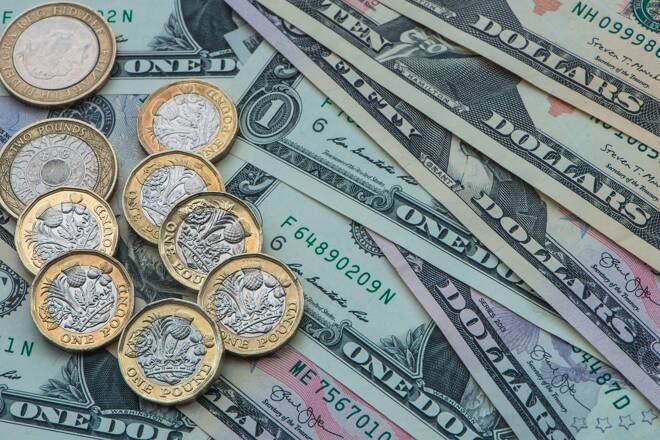Advertisement
Advertisement
GBP to USD Forecast: UK Labor Data vs. US Inflation – A Clash of Currencies
By:
Soft UK wage growth, higher unemployment rates, and BoE hints on rates draw investors' attention. Cable's fate in the balance.
Highlights
- The GBP/USD rose by 0.44% on Monday, ending the session at $1.22788.
- On Tuesday, UK wage growth, unemployment, and BoE commentary will draw interest.
- US inflation and central bank speeches will also be in focus.
The Monday GBP/USD Overview
On Monday, the GBP/USD rose by 0.44%. Following a 0.02% gain on Sunday, the GBP/USD ended the day at $1.22788. The GBP/USD fell to a low of $1.22092 before climbing to a high of $1.22803.
UK Labor Market in the Spotlight
Tuesday will see investors’ interest focused on UK wage growth, unemployment, and BoE commentary. Softer wage growth and a higher UK unemployment rate would support bets on the Bank of England ending its rate hike cycle. Notably, if labor market conditions continue to deteriorate, the BoE may consider a rate cut in the first half of 2024.
Softer wage growth reduces disposable income. A downward trend in disposable income affects consumer spending while dampening demand-driven inflationary pressures.
Economists forecast the UK unemployment rate to increase from 4.2% to 4.3% in September. Significantly, economists predict wage growth to soften from 8.1% to 7.4% in the third quarter.
Given the spotlight on the UK labor market, it’s essential to monitor Bank of England speeches. BoE Chief Economist Huw Pill is on the calendar to speak. Monetary Policy Committee member Swati Dhingra will also deliver a speech. Reaction to the labor market numbers warrants consideration.
US Inflation and the Fed in the Spotlight
On Tuesday, the US CPI Report will also garner investor interest. Sticky US inflation could fuel bets on a Fed rate hike. Higher interest rates would raise borrowing costs while reducing disposable income. A downward trend in disposable income would impact consumer spending and ease demand-driven inflationary pressure.
Economists forecast the US annual inflation rate to soften from 3.7% to 3.3% in October. However, economists expect core inflation to remain unchanged at 4.1%.
Beyond the numbers, Fed speakers need monitoring. FOMC members Michael Barr, Loretta Mester, and Austan Goldsbee are on the calendar to speak. Reaction to the CPI Report will influence the appetite for the US dollar.
Short-Term Forecast
Near-term GBP/USD trends hinge on the US CPI Report and the UK labor market numbers. Sticky US inflation and softer UK wage growth would tilt monetary policy divergence toward the US dollar. Bets on an H1 2024 BoE rate cut could send the GBP/USD to sub-$1.21500.
GBP to USD Price Action
Daily Chart
The GBP/USD sat below the 50-day and 200-day EMAs, sending bearish price signals.
A GBP/USD drop below the $1.22 handle would bring the $1.21216 support level into play.
Softer UK wage growth and sticky US inflation would impact buyer demand for the GBP/USD.
However, a move through the 50-day EMA would support a move to the 200-day EMA and the $1.24410 resistance level. Softer-than-expected US inflation numbers and dovish Fed comments could fuel buyer appetite for the GBP/USD.
The 14-period daily RSI reading of 52.54 suggests a GBP/USD move to the 200-day EMA before entering overbought territory.
4-Hourly Chart
The GBP/USD held above the 50-day and 200-day EMAs, sending bullish price signals. Notably, the 50-day and 200-day EMAs remained converged after the bearish cross.
A GBP/USD return to $1.23 would support a move toward the $1.24410 resistance level.
However, a break below the EMAs would bring the $1.21216 support level into play.
The 14-period RSI on the 4-hour Chart at 53.71 indicates a GBP/USD return to $1.23500 before entering overbought territory.
About the Author
Bob Masonauthor
With over 28 years of experience in the financial industry, Bob has worked with various global rating agencies and multinational banks. Currently he is covering currencies, commodities, alternative asset classes and global equities, focusing mostly on European and Asian markets.
Did you find this article useful?
Latest news and analysis
Advertisement
